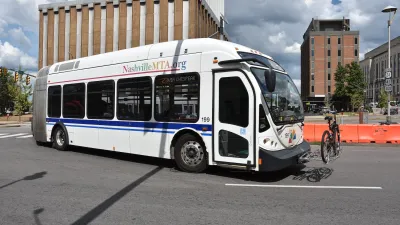As part of Toronto’s tower renewal effort, new zoning allows for the integration of commercial and community uses into post-war tower neighbourhoods while a loan program offers up capital for energy-efficient upgrades.
“This was a great dream of 20th-century architecture: towers that would house people high above the streets, swimming in light and air, surrounded by acres of green lawns,” writes Alex Bozikovic. “The tower in the park, as this type of building was known, has evolved into the tower in the parking lot: They are aging, isolated, lacking services and community.”
Toronto’s inventory of apartment towers is the second-largest in North America, and a critical segment of the city’s rental market. While these units were originally planned for a world where there was a car in every spot, apartment towers are now home to many new Canadians and lower-income families to whom a landscape of undefined open space and parking is of little use. New zoning, adopted this spring, will allow for the previously prohibited incorporation of small shops, home-based businesses and community services into a number of tower neighborhoods.
Additionally, to help finance green upgrades to these notoriously inefficient structures, the City has made special loans available to building owners. “The carbon footprints of the buildings will be reduced; property owners will pay back the loans over time, via extra charges on their property taxes, and profit over the long term; and tenants will live better,” says Bozikovic. “Everyone wins.”
FULL STORY: Toronto hopes to revitalize its many postwar highrises

Alabama: Trump Terminates Settlements for Black Communities Harmed By Raw Sewage
Trump deemed the landmark civil rights agreement “illegal DEI and environmental justice policy.”

Planetizen Federal Action Tracker
A weekly monitor of how Trump’s orders and actions are impacting planners and planning in America.

The 120 Year Old Tiny Home Villages That Sheltered San Francisco’s Earthquake Refugees
More than a century ago, San Francisco mobilized to house thousands of residents displaced by the 1906 earthquake. Could their strategy offer a model for the present?

In Both Crashes and Crime, Public Transportation is Far Safer than Driving
Contrary to popular assumptions, public transportation has far lower crash and crime rates than automobile travel. For safer communities, improve and encourage transit travel.

Report: Zoning Reforms Should Complement Nashville’s Ambitious Transit Plan
Without reform, restrictive zoning codes will limit the impact of the city’s planned transit expansion and could exclude some of the residents who depend on transit the most.

Judge Orders Release of Frozen IRA, IIJA Funding
The decision is a victory for environmental groups who charged that freezing funds for critical infrastructure and disaster response programs caused “real and irreparable harm” to communities.
Urban Design for Planners 1: Software Tools
This six-course series explores essential urban design concepts using open source software and equips planners with the tools they need to participate fully in the urban design process.
Planning for Universal Design
Learn the tools for implementing Universal Design in planning regulations.
Clanton & Associates, Inc.
Jessamine County Fiscal Court
Institute for Housing and Urban Development Studies (IHS)
City of Grandview
Harvard GSD Executive Education
Toledo-Lucas County Plan Commissions
Salt Lake City
NYU Wagner Graduate School of Public Service





























